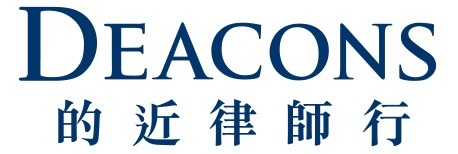In seeking authorisation from the Securities and Futures Commission (SFC) to offer an Undertaking for Collective Investment in Transferable Securities (UCITS) to the Hong Kong public, an applicant is required to submit the draft offering documents to the SFC for its review and approval. The management company can prepare the offering documents in two ways: extract from the global prospectus all the information relating to the sub-fund(s) intended to offered in Hong Kong and prepare a standalone Hong Kong Prospectus (also known as a Hong Kong Summary Prospectus (HKSP)) (Option 1); or adopt the global prospectus and append a Hong Kong Covering Document (HKCD) (Option 2). The preferred option depends on the circumstances and this article serves as a guide by providing practical factors to consider, with a table summarising the pros and cons of each option at the end.
Option 1
The number of sub-funds under the umbrella and the number of sub-funds chosen to apply for the SFC’s authorisation have a great bearing – if among the many sub-funds only one or two sub-funds are to be offered in Hong Kong, Option 1 may be the preferred route as it allows information relating to the other sub-funds to be omitted entirely. This may significantly reduce the volume of documents, providing a more centralised location for information and a lower Chinese translation cost.
In addition, with this option, any future changes to the non-SFC-authorised funds in the global prospectus would not affect the HKSP and so no follow up action is required in Hong Kong, meaning a lighter ongoing compliance burden. A HKSP is also usually preferred by the sales team due to its all-in-one format, containing only information relevant to Hong Kong investors in a concise manner.
Option 2
Conversely, if the fund manager wishes to start off with offering a small number of sub-funds in Hong Kong and eventually expand the product offerings (i.e. most of the sub-funds under the umbrella are intended to be offered in Hong Kong), it may be more cost effective to adopt Option 2 taking into account the future product offerings. In terms of compliance, Option 2 is more convenient because Hong Kong-specific disclosures and additional disclosures required by the SFC can all be dealt with together in the HKCD.
Another upside when dealing with future changes to the fund is that this option avoids the need to amend the HKSP piecemeal, which reduces complexities in ongoing document maintenance and compliance monitoring. As a matter of fact, we have observed this option become increasingly common among our clients.
Other observations
Please note that the foregoing is not meant to be exhaustive and fund houses should take into account their own circumstances and preferences when deciding on the format/structure of the Hong Kong offering documents.
A global prospectus can come in different formats. The most common one is either a master document listing out all the information of a sub-fund one-by-one, or a base document followed by supplements specific to each of the sub-funds. For the latter format, Chinese translation for the sub-fund(s) not being offered in Hong Kong would not be necessary, and the fund manager may consider this reduced translation cost an incentive. A switch between these two formats is usually coined as a “re-write”, and a mapping exercise should be conducted to evaluate the substance and the nature of those changes, which in turn determines whether the SFC’s authorisation is needed.
If the manager wishes to change the format/structure of the Hong Kong offering documents (from Option 1 to Option 2 or vice versa), approval from the SFC may be required. According to the SFC’s Code on Unit Trusts and Mutual Funds, further authorisation is not required if the content and format of the Hong Kong offering documents remain fundamentally the same as the version previously authorised. As such, if a mapping exercise reveals that there are substantial changes in the format and layout, then the SFC’s authorisation is likely to be necessary. We would suggest consulting the change in formatting with the SFC before proceeding.
The manager should consider the long-term operation of the fund because switching between the options above might involve substantial administrative work and wasted time costs. It is also prudent to have sight of the global prospectus and conduct a feasibility study to facilitate making a choice.
Table summarising the pros and cons of Option 1 and Option 2
| Option 1 | Option 2 | |
| Volume of documents | Generally lower, especially when in a big umbrella, only one or two sub-funds are to be authorised by the SFC | Higher |
| Translation costs | Generally lower since it is in proportion to the volume of documents | Higher |
| Location of information/ disclosures | Centralised (preferred by the sales team) | Spread across the global prospectus and the HKCD |
| Follow up action required if there are changes to non-SFC-authorised sub-funds | Lighter compliance burden and monitoring Lighter document maintenance | Heavier compliance burden and monitoring Heavier document maintenance |
| Compliance (SFC-specific) | Less convenient | More convenient: Hong Kong-specific disclosures and additional disclosures addressing the SFC’s comments can be dealt altogether |






